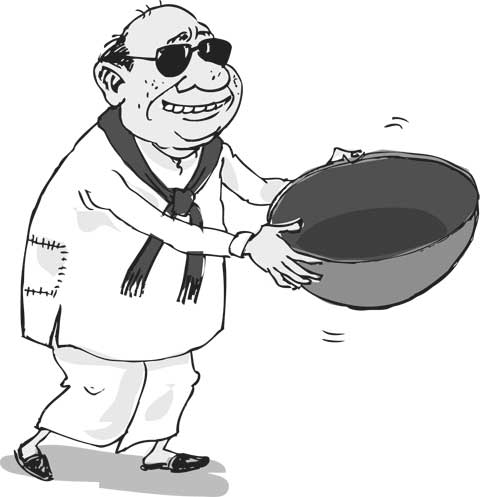Reply To:
Name - Reply Comment
For more than four years after the end of the war top government leaders, the Finance Ministry Secretary the Central Bank Chief and others have been giving economic figures and projections suggesting that Sri Lanka’s growth rates, per capita income, inflation rates and other figures were good and improving to pave the way to make Sri Lanka the hub or miracle of Asia.
Independent economic analysts and opposition critics have been challenging those figures pointing out that export earnings were plunging and the foreign borrowing rates were increasing to the extent that the economy was like a sand castle that could crumble in a storm.
Amid this conflicting and contradictory interpretations the Rajapaksa regime was hit by an economic bombshell on Friday by the world renowned Fitch Ratings agency, an international credit rating institution whose ratings are used as a guide to investors as to which investments are most likely going to yield a return. It is based on factors such as how small an economic shift would be necessary to affect the standing of the bond and how much, and what kind of debt is held by the company or country.

In a report on Sri Lanka Fitch Ratings said, among the emerging markets in Asia, Sri Lanka had the highest debt burden next only to Mongolia. It said Sri Lanka’s state foreign debt burden was now 57 percent of its Gross Domestic Product. In simple language that means as much as 57 percent of what we earn or produce goes for the payment of debts.
Fitch Ratings gave two main reasons why Sri Lanka’s debt burden has soared. One was the relative currency stability as due to a less open capital account, which provided insulation from volatile global capital flows and the increasing ability to tap off-shore global bond inflows. Fitch Ratings said, Sri Lanka’s current account deficit was expected to remain at 5.6 percent of GDP this year.
The other reason was that Sri Lanka has been unable to attract much by way of foreign direct investment inflows with a net FDI averaging just 1.2 percent of GDP since 2009. According to Fitch Ratings, this is low in comparison with most other countries in the region and has fuelled a reliance of debt-creating capital.